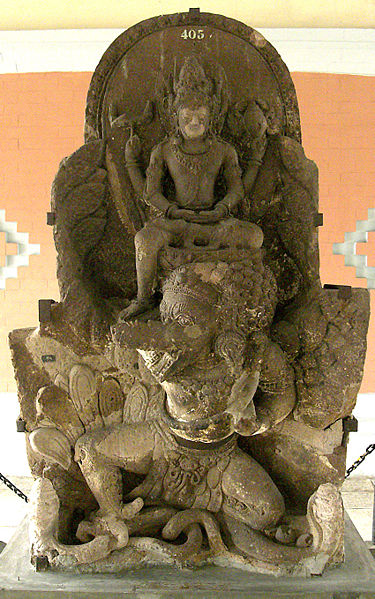Kediri Kingdom was a Hindu-Buddhist Javanese kingdom based in East Java from 1042 until 1222. This kingdom is centered in the ancient city Dahanapura, despite the lack of archaeological remains, the age of Kediri saw much development in classical literature. Mpu Sedah's Kakawin Bharatayuddha, Mpu Panuluh's Gatotkacasraya, and Mpu Dharmaja's Smaradhana blossomed in this era. The kingdom's capital is believed to have been established in the western part of the Brantas River valley, somewhere near modern Kediri city and surrounding Kediri Regency.
Airlangga's embodiment statue as Lord Vishnu riding Garuda, found in Belahan, collection of Trowulan Museum, East Java.
Statue of Vishnu. Kediri, East Java, c. 12th–13th century
Temple Penataran is a temple that is four centuries old because it was built and developed by several kingdoms at once, starting from the Kingdom of Kediri to Majapahit.
Wayang Kulit puppet of Panji Brajanata―the prince of Kediri Kingdom.
Smaradahana, also known as Smaradhana, Asmaradhana, Asmaradahana, Asmaradana, Asmarandhana, or Asmarandana is an old Javanese poem (kakawin) written by Mpu Dharmaja as the eulogy for King Kameçvara of Kediri in early-12th century East Java. The story describes the disappearance of Kamajaya and Kamaratih from Svargaloka after being burnt by a fire that burst from the third eye of Shiva. Their spirits fall upon the earth where incarnated as human beings, their spirits seduce and inspire lovers' hearts.
The scenes from the Smaradahana depicted in Balinese painting made by I Ketut Gedé c. 1890
Kama being burnt by Shiva. From the cover of a book released by the Balinese Education Council.






